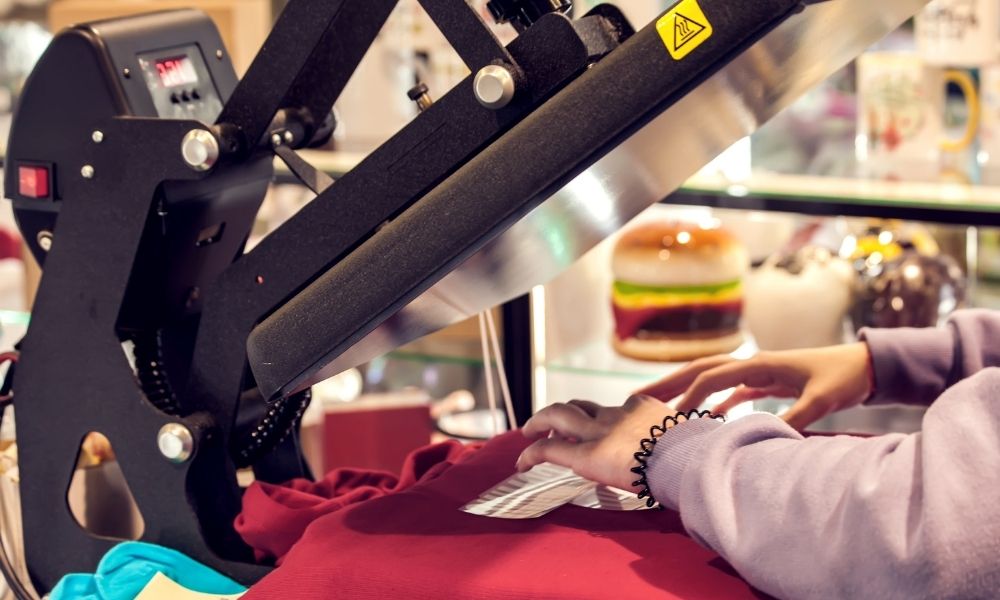Heat Pressing on Different Fabrics: A Comprehensive Guide
Heat pressing is a versatile method for customizing various fabrics with designs and graphics. Understanding how heat pressing interacts with different types of fabrics is crucial for achieving the best results. This guide explores how to effectively use heat press technology on various fabrics, offering tips and considerations for each type.
What is Heat Pressing?
Heat pressing involves using a heat press machine to apply heat and pressure to a transfer material, which then adheres to a substrate, such as fabric. This process is commonly used to transfer designs, text, and images onto garments and other items. Heat pressing is valued for its precision and ability to produce high-quality, durable prints.
How Heat Pressing Works
The heat pressing process typically involves the following steps:
1. Design Preparation
Create or select a design using graphic design software. Print the design onto transfer paper or cut it from heat transfer vinyl (HTV). Ensure that the design is properly sized and aligned.
2. Heat Press Setup
Set the heat press machine to the recommended temperature and time settings for the specific transfer material. Preheat the machine to ensure it reaches the desired temperature.
3. Positioning and Pressing
Place the transfer paper or HTV onto the fabric in the desired position. Close the heat press machine to apply heat and pressure. Follow the recommended time and temperature settings to ensure proper adhesion.

4. Removing the Transfer
After pressing, carefully remove the transfer material. Allow the fabric to cool before handling to ensure the design adheres securely.
Heat Pressing on Different Fabrics
Different fabrics require specific heat press settings and techniques to achieve optimal results. Here’s a guide to heat pressing on various types of fabrics:
Cotton Fabrics
Cotton is one of the most common fabrics used in heat pressing. It is highly receptive to heat and pressure, making it ideal for various designs.
Settings and Techniques
For cotton fabrics, use a heat press temperature of 305°F (150°C) and press for 10-15 seconds. Apply medium pressure and ensure that the fabric is prepped by removing any wrinkles or moisture before pressing.
Considerations
Cotton fabrics generally handle heat well, but avoid using excessive heat to prevent potential scorching. Test a small sample if you’re unsure about the fabric’s heat tolerance.
Polyester Fabrics
Polyester fabrics are known for their durability and resistance to wrinkles. They can be more sensitive to heat compared to cotton.
Settings and Techniques
For polyester fabrics, set the heat press to a lower temperature of around 270°F (130°C) and press for 10-12 seconds. Use light to medium pressure and ensure that the fabric is smooth and free of any moisture.
Considerations
Polyester fabrics can be prone to heat-related issues such as melting or distortion. Use a lower temperature and test the settings on a small area to avoid damage.
Blended Fabrics
Blended fabrics, such as cotton-polyester blends, combine the characteristics of both materials. This can affect how they react to heat pressing.
Settings and Techniques
For blended fabrics, use a temperature around 290°F (145°C) and press for 12-15 seconds. Adjust the pressure based on the fabric blend to ensure even application. It’s essential to test a sample before proceeding with a full batch.
Considerations
Blended fabrics may have varying responses to heat based on their composition. Testing different settings can help achieve the best results and avoid issues like fading or uneven transfers.
Nylon Fabrics
Nylon is a synthetic fabric that can be challenging to heat press due to its sensitivity to heat and potential for melting.
Settings and Techniques
For nylon fabrics, set the heat press to a low temperature of around 270°F (130°C) and press for 8-10 seconds. Use light pressure and always test on a small, inconspicuous area to avoid damage.
Considerations
Nylon fabrics can melt or become damaged if exposed to high temperatures. Use a lower temperature and shorter pressing time to ensure that the fabric remains intact.
Performance Fabrics
Performance fabrics, such as those used in athletic wear, often have moisture-wicking properties and can be sensitive to heat.
Settings and Techniques
For performance fabrics, use a temperature of 270°F (130°C) and press for 10-12 seconds. Light to medium pressure is typically sufficient. Ensure the fabric is dry and free from moisture to prevent issues during pressing.
Considerations
Performance fabrics can be affected by heat, so it’s crucial to use precise settings and test samples to prevent damage or distortion of the fabric’s properties.
Tips for Successful Heat Pressing
To ensure successful heat pressing on various fabrics, follow these tips:
1. Always Test First
Before committing to a full run, test the heat press settings on a small sample of the fabric. This helps to identify any potential issues and ensures that the design adheres properly.
2. Preheat and Prepare the Fabric
Preheat the fabric to remove any moisture and wrinkles. This ensures an even application of heat and pressure, leading to better transfer results.
3. Use Proper Pressure
Apply the recommended pressure for the type of fabric you are working with. Too much pressure can cause damage, while too little can result in poor adhesion.
4. Follow Manufacturer Guidelines
Always follow the manufacturer’s recommendations for temperature, time, and pressure settings for both the heat press machine and the transfer materials. This ensures optimal results and reduces the risk of errors.
Conclusion
Heat pressing is a versatile method for customizing various fabrics, but each fabric type requires specific settings and techniques. By understanding how different fabrics respond to heat press technology and following best practices, you can achieve high-quality, durable results for all your customization projects. Whether working with cotton, polyester, blended fabrics, or specialty materials, proper preparation and testing are key to successful heat pressing.
